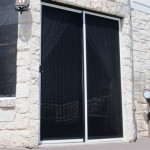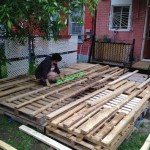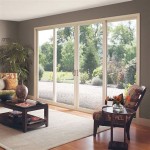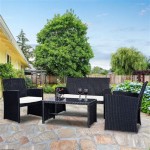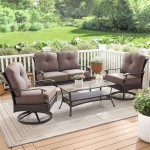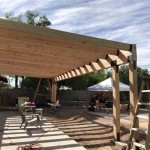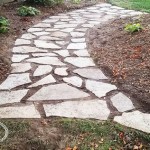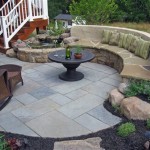Patio Fire Pits: Enhancing Outdoor Living Spaces
A patio fire pit serves as a focal point and gathering place, transforming an outdoor area into a warm and inviting extension of the home. These installations offer more than just heat; they provide ambiance, extend the usability of outdoor spaces during cooler months, and create opportunities for social interaction. The market offers a variety of fire pit designs, fuel options, and materials, catering to diverse aesthetic preferences and functional requirements.
The selection of a suitable patio fire pit requires careful consideration of several factors, including the available space, desired heat output, local regulations, and budget. Understanding the nuances of each type and feature ensures a purchase that aligns with both lifestyle and safety standards. This exploration delves into the different aspects of patio fire pits, aiming to provide comprehensive information for informed decision-making.
Fuel Options and Their Characteristics
The choice of fuel significantly impacts the fire pit's performance, maintenance requirements, and environmental footprint. Common fuel options include wood, propane, natural gas, and gel fuel, each with distinct advantages and disadvantages.
Wood-Burning Fire Pits: Wood provides a traditional, rustic ambiance and a crackling sound that many find appealing. However, wood-burning fire pits require a readily available source of firewood and demand more maintenance than their gas-fueled counterparts. They produce smoke and ash, which can be bothersome to some and may necessitate compliance with local regulations regarding open burning. The heat output of wood-burning fire pits is generally high, but controlling the intensity can be challenging. Considerations for safety include ensuring adequate clearance from overhead structures and flammable materials, and having a means of extinguishing the fire quickly.
Propane Fire Pits: Propane fire pits offer a convenient and relatively clean-burning alternative to wood. They are easy to ignite and control, providing instant heat with adjustable flame heights. Propane fire pits typically connect to a portable propane tank, which requires storage and periodic refills. Some models can be connected to a larger, permanently installed propane tank. The portability of propane fire pits makes them versatile for different patio layouts. While propane burns cleaner than wood, it still produces some emissions, so adequate ventilation is essential. Safety considerations include proper storage and handling of propane tanks, and regular inspection of connections for leaks.
Natural Gas Fire Pits: Natural gas fire pits are connected directly to a home's natural gas line, providing a continuous fuel source without the need for tank refills. They offer convenience and consistent heat output. Installation requires professional plumbing and may involve permits, depending on local codes. Natural gas burns cleaner than propane and wood, producing fewer emissions. Because they are permanently installed, natural gas fire pits are less portable than propane models. Safety considerations include ensuring proper installation and maintenance of the gas line, and regular inspection of connections for leaks.
Gel Fuel Fire Pits: Gel fuel fire pits are typically smaller, more decorative units designed for ambiance rather than significant heat output. They utilize canisters of gel fuel, which produce a clean-burning flame without smoke or odor. Gel fuel fire pits are easy to use and require minimal maintenance. However, the heat output is relatively low, making them suitable primarily for aesthetic purposes. The cost of gel fuel can be higher than other fuel options. Safety precautions include using only approved gel fuel canisters and avoiding placing flammable materials near the flame.
Material Selection and Design Considerations
The material composition of a patio fire pit influences its durability, aesthetics, and heat resistance. Common materials include steel, copper, stone, concrete, and tile, each offering a unique blend of properties.
Steel Fire Pits: Steel fire pits are known for their strength and durability. They can withstand high temperatures and are relatively resistant to damage. Steel is often coated with a high-temperature paint or powder coating to prevent rust and corrosion. Steel fire pits are available in a variety of styles, from modern and minimalist to rustic and traditional. They are generally more affordable than fire pits made from other materials. Regular cleaning and maintenance are necessary to prevent rust and extend the lifespan of steel fire pits.
Copper Fire Pits: Copper offers a distinctive aesthetic appeal and excellent heat conductivity. Copper fire pits develop a natural patina over time, adding to their character. Copper is a durable material but can be more expensive than steel. Copper fire pits require minimal maintenance. They are often handcrafted and feature intricate designs, making them a statement piece in any outdoor space.
Stone Fire Pits: Stone fire pits provide a natural and timeless look, blending seamlessly with outdoor environments. They are highly durable and resistant to weathering. Stone fire pits can be constructed from various types of stone, including granite, limestone, and slate, offering a range of colors and textures. Stone is a heavy material, so stone fire pits are typically stationary. They provide excellent heat retention and radiation. Stone fire pits require minimal maintenance.
Concrete Fire Pits: Concrete fire pits offer a modern and sleek aesthetic. They can be molded into various shapes and sizes, providing design flexibility. Concrete is a durable and heat-resistant material. Concrete fire pits can be finished with different textures and colors to match the surrounding landscape. They are relatively low-maintenance and easy to clean. Concrete fire pits can be customized with decorative aggregates and inlays.
Tile Fire Pits: Tile fire pits combine the durability of a base material, such as concrete or steel, with the decorative appeal of ceramic or porcelain tiles. Tile offers a wide range of colors, patterns, and textures, allowing for personalized designs. Tile is easy to clean and resistant to staining. Tile fire pits can be used with various fuel options. The grout between the tiles requires periodic cleaning and sealing to prevent water damage.
Design considerations extend beyond the material itself. The shape, size, and style of the fire pit should complement the existing patio furniture and landscaping. Round fire pits promote a more communal and conversational atmosphere, while rectangular fire pits can be integrated into linear patio designs. The height of the fire pit should be appropriate for seating arrangements, allowing for comfortable viewing of the flames.
Safety Regulations and Installation Guidelines
Ensuring safe operation of a patio fire pit is paramount. Adherence to local regulations and proper installation practices minimizes the risk of accidents and property damage. Before purchasing or installing a fire pit, it is essential to consult local fire codes and obtain any necessary permits.
Fire codes typically specify minimum clearance distances between the fire pit and combustible materials, such as fences, trees, and overhanging structures. These distances vary depending on the type of fuel used and the size of the fire pit. It is crucial to maintain these clearances to prevent the spread of fire. Some jurisdictions may also restrict the use of wood-burning fire pits during certain times of the year due to air quality concerns.
Installation guidelines vary depending on the type of fire pit. Gas-fueled fire pits require professional installation by a qualified plumber or gas fitter. This ensures that the gas line is properly connected and that all safety features are functioning correctly. Wood-burning fire pits should be placed on a non-combustible surface, such as concrete, stone, or gravel. A spark screen should be used to prevent embers from escaping and potentially igniting nearby materials.
General safety precautions include never leaving a fire unattended and keeping a fire extinguisher or water hose readily available. Children and pets should be supervised closely around the fire pit. Avoid using flammable liquids to start or accelerate a fire. Ensure that the fire pit is placed on a level surface to prevent it from tipping over. Regularly inspect and maintain the fire pit to ensure that all components are in good working order.
Proper ventilation is crucial, especially for enclosed patios or areas near windows and doors. Carbon monoxide, a colorless and odorless gas, can be produced during combustion. Installing a carbon monoxide detector near the patio area is recommended to provide an early warning in case of a build-up. Understanding and adhering to all applicable safety regulations and installation guidelines is essential for enjoying a patio fire pit safely and responsibly.
Beyond the functional and safety aspects, a patio fire pit can be customized with accessories to enhance the experience. Fire pit covers protect the unit from the elements when not in use. Cooking grates allow for grilling food over the open flame. Decorative glass or lava rocks add visual appeal to gas-fueled fire pits. Seating arrangements can be tailored to the size and shape of the fire pit, creating a comfortable and inviting gathering space. Ultimately, the goal is to create an outdoor living area that reflects personal style and provides years of enjoyment.

30 Fire Pit Ideas That Are Under The Budget Backyard Patio

Which Fire Pit Is Right For Your Patio Paver House Blog
Fire Pit Ideas For Any Budget

12 Best Outdoor Fire Pit Ideas Diy Backyard

60 Backyard And Patio Fire Pit Ideas Diffe Types With Photo Examples Landscaping Outdoor Designs

12 Best Outdoor Fire Pit Ideas Diy Backyard

Patio Fire Pit And Seating Wall Combinations Construction In Muskegon Mi

20 Fire Pit Ideas For Your Backyard

Outdoor Fire Pits Tables Safety Style And Fuel

How To Build A Diy Paver Patio With Firepit
Related Posts

